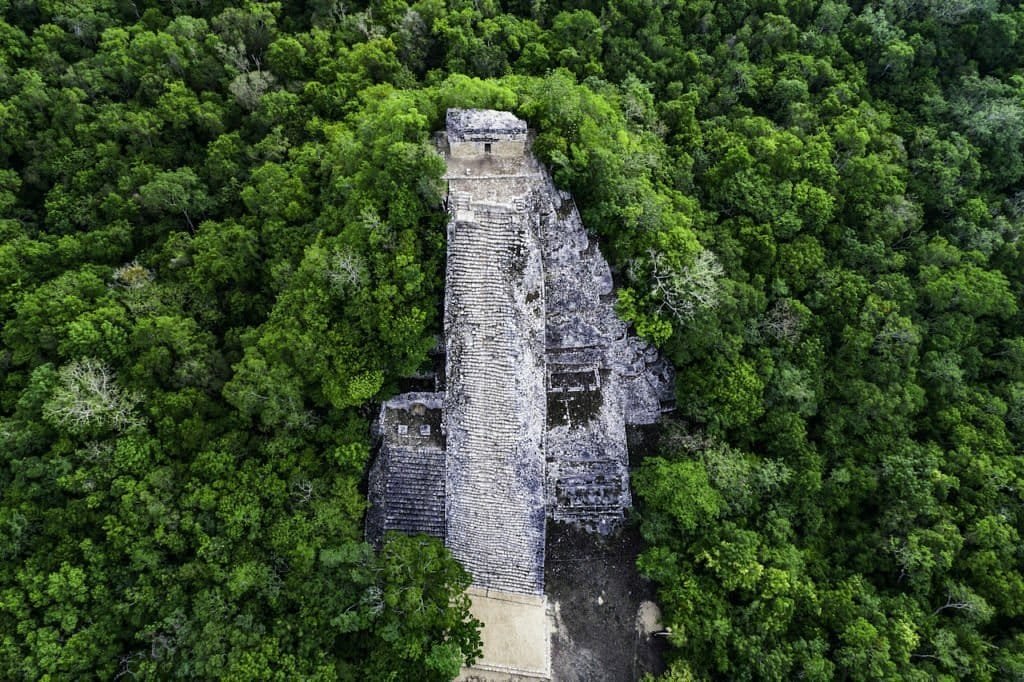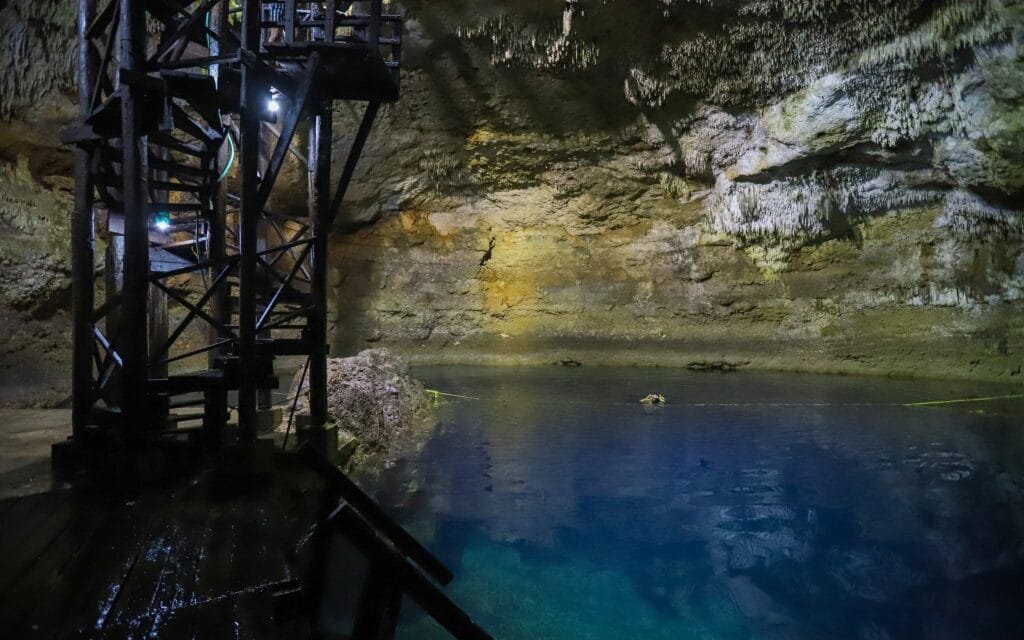In a groundbreaking discovery, archaeologists and speleology experts have uncovered an extensive underground tunnel system near the archaeological site of Cobá in Quintana Roo. Spanning over five kilometers, this intricate network of tunnels is believed to have served as ancient Maya trade routes, connecting ceremonial centers and communities across the region.
The discovery, led by the National Institute of Anthropology and History (INAH) in collaboration with the University of Quintana Roo, sheds new light on the advanced engineering, social organization, and spiritual practices of the Maya civilization. While detailed investigations continue, the site remains closed to the public, with plans to eventually preserve it as a cultural heritage landmark.
A Multi-Purpose Marvel of Engineering
The tunnel system is more than just a transportation route. Experts suggest it played a versatile role in Maya society, facilitating trade and connecting communities while also serving as sacred spaces for religious ceremonies and as refuges during conflict or natural disasters such as hurricanes.
Subterranean chambers within the network may have been used for water-related ceremonies, reflecting the Maya’s spiritual connection to cenotes and the underworld. Petroglyphs and pottery fragments adorn the walls, showcasing the Maya’s artistic and engineering skills. Traces of stucco and evidence of hydraulic systems further underline their mastery over their environment.
Dr. Alejandro Hernández, the project’s lead archaeologist, emphasized that the discovery demonstrates the Maya’s ability to adapt to and transform their natural surroundings while maintaining complex social and technological systems.

Recent Archaeological Discoveries in Quintana Roo
This tunnel network is just the latest in a series of remarkable finds in Quintana Roo, which continues to offer new insights into the ancient Maya civilization. In 2023, researchers discovered sacred underwater caves near Tulum filled with artifacts such as ceremonial pottery, tools, and skeletal remains. These caves, considered entrances to the underworld, or Xibalba, in Maya mythology, provide a fascinating glimpse into the spiritual practices of the civilization.
At Uxbenka, near the Belize border, stelae carved with hieroglyphs have provided valuable details about political alliances and rivalries during the Late Classic period. Meanwhile, restorations in the coastal site of Muyil have revealed vibrant murals depicting Maya mythology, trade activities, and everyday life, offering a vivid glimpse into the culture.
The Ancient Maya in Quintana Roo
Quintana Roo was a critical region for the Maya, serving as a hub for trade, religion, and innovation. Coastal cities like Tulum and Xel-Há acted as trade outposts, connecting the Yucatán Peninsula to Central America. The region’s dense forests and proximity to cenotes made it both a challenging and resource-rich environment.
The Maya developed sophisticated water management systems, including aqueducts, reservoirs, and canal networks, to navigate and store water in this karstic region. Their temples and observatories, such as those in Tulum, align with solstices and other celestial events, reflecting their deep understanding of astronomy. Many Maya communities in Quintana Roo today continue to maintain traditions linked to their ancestors, including language, agricultural practices, and spiritual ceremonies.

What’s Next for the Cobá Tunnels?
As the research team continues to map and document the tunnel system near Cobá, they aim to uncover further details about its construction and use. While the site remains closed during these investigations, the findings are expected to deepen our understanding of the Maya’s influence on the Yucatán Peninsula.
Plans to preserve and eventually open parts of the site to the public could make it a significant attraction for those interested in the region’s ancient history. Visitors may one day have the chance to walk through these tunnels and connect with the ingenuity and spirituality of a civilization that thrived centuries ago.
Preserving the Maya Legacy
This discovery not only underscores the Maya’s unparalleled engineering and cultural achievements but also highlights the importance of preserving these treasures for future generations. Quintana Roo’s archaeological sites, from the underwater caves of Tulum to the monumental ruins of Cobá, are vital pieces of the human story, reminding us of the ingenuity and resilience of those who came before.
As more secrets emerge from beneath the forest floor, Quintana Roo continues to affirm its place as one of the most fascinating regions for uncovering the mysteries of the ancient Maya.
Discover more from Riviera Maya News & Events
Subscribe to get the latest posts sent to your email.

